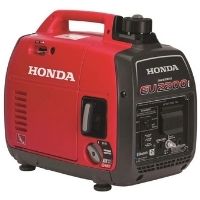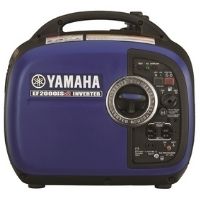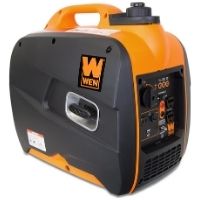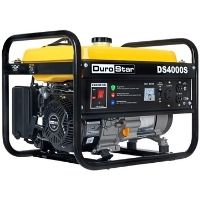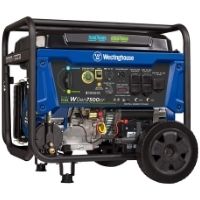Best Portable Home Generators Buyers Guide
There are two basic types of generators: portable and standby units. We’ve focused on the portables in this guide because they’re affordable solutions perfect for the average homeowner. The Honda EU2200iTAG is our top pick because it's so quiet and powerful thanks to inverter technology. It's on the pricier end, but it's totally worth it.
Our generator recommendations are all gas-powered generators, producing low to medium amounts of wattage that’ll keep the average home humming.
Best portable generators
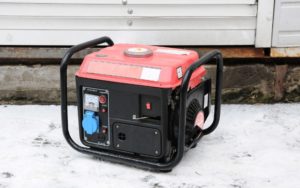
Compare the best portable generators
*Amazon.com list price as of 04/15/2021 at 6:10 p.m. (MT). Read full disclaimer.
1. Honda EU2200iTAG: Best overall
Amazon.com list price as of 04/15/2021 at 6:10 p.m. (MT). Read full disclaimer.
Honda is a reliable brand name in portable generators, and its engines are famously fuel-efficient. While the Honda EU2200iTAG is a compact model puts out only 1,800 watts at full load, you’ll make bank with fuel efficiency and keep it quiet enough to avoid noise complaints.
Honda indicates this generator operates for eight hours on one tank of fuel and has a low-oil shutoff feature. It also comes with Honda’s standard three-year warranty and is California Clean Air Resources Board (CARB) compliant.
Reviews claim this is an extremely quiet unit, and manufacturer specifications indicate the noise level is similar to that of a normal conversation. As we discussed previously, inverters make generators more fuel efficient and quieter in general.
This isn’t going to power your whole home. Many customers say they use these for RVs or to supply just the essentials during an outage. Know that it has an old-fashioned cord pull, like a lawnmower, but it’s easy to use and doesn’t require much muscle.
2. Yamaha EF2000iSv2: Runner up
Amazon.com list price as of 04/15/2021 at 6:10 p.m. (MT). Read full disclaimer.
You can have it all, but you’ll have to pay for it. The Yamaha EF2000iSv2 is quiet, has a CARB-complaint engine, and produces outstanding fuel efficiency wrapped in a compact package. That price tag may give you pause, but if you’re looking for an inverter generator with great reviews and all the bells and whistles, you’ve found it. Yamaha also covers this portable home generator under a three-year warranty.
This is about four pounds lighter—and significantly smaller—than the WEN, so if you need something portable, you won’t find anything better than the Yamaha. Yamaha has this inverter dialed in, providing over 10.5 hours of run time with a quarter load on one tank of gas. That’s pretty fierce, and it blows away the competition.
Just the essentials, please, or you’ll overload the wattage this unit puts out. Calculate what you’ll need and make sure this generator is going to do the trick. And, unless you can grab this model on sale during the off season, this generator is pricey. But considering the fuel-efficiency gains, it may pay for itself before the warranty expires.
3. WEN 56200i: Budget pick
Amazon.com list price as of 04/15/2021 at 6:10 p.m. (MT). Read full disclaimer.
The WEN 56200i inverter is basically a clone of the Honda EU2200iTAG for under half the price. This is the best of the bargain inverters, and it garners great customer reviews.
You’ll get similar wattage in this compact, quiet unit but a little less fuel efficiency. The WEN produces 9.4 hours of power, is EPA III and CARB compliant to save your conscience and the environment, and comes with a two-year warranty. This unit is quieter than the Yamaha EF2000iSv2 on the specs sheet, but actual customer reviews indicate it may be a bit louder in practice.
Again, its wattage isn’t going to be enough to run anything but the essentials, so make sure you understand your power needs before you buy. The WEN costs less up front, but over time, the Honda may be a better value since this guzzles more gas. Do the math to ensure your bargain buy is the steal you think it is.
4. DuroStar DS4000S: Affordable power
Amazon.com list price as of 04/15/2021 at 6:10 p.m. (MT). Read full disclaimer.
The DuroStar DS4000S isn’t an inverter generator like our top three picks, but if you don’t mind the noise and the fumes, you’ll get plenty of juice for all your appliances at a bargain basement price.
Buyer beware though—this one is heavy, and the wheel kit is an additional cost. It’s also not CARB compliant, and at 69 dB (the second-loudest on our list), you may want to opt for some earplugs.
This model is a bargain, no doubt about it. It’s a generator that focuses on the power and leaves the fancy stuff behind.
At 3,300 watts, you’ll be able to supply most of your major appliances and keep things humming along. A word of warning: even with tank that's almost four times larger, this model still manages to blow through fuel in about 12 hours. And at 95 pounds, this generator is nearly twice what the top three models weigh. You’re going to need that wheel kit for sure.
5. Westinghouse WGen7500DF: Most flexible
Amazon.com list price as of 04/15/2021 at 6:10 p.m. (MT). Read full disclaimer.
The Westinghouse WGen7500DF is extremely powerful, runs on gas and propane, has a slew of power ports, and even a dedicated battery charging port. All in exchange for a lot of weight and noise. Not only does it churn out nearly double the wattage of other generators on our list, it does so with mind-blowing fuel efficiency.
DuroStar runs for eight hours on a four-gallon tank at half load, while this Westinghouse generator gives you 16 hours (and over double the wattage) on a 6.6-gallon tank. While it’s hard to argue with specs like that, your bank account might not agree. This beast will set you back almost thousand dollars.
With its high wattage, you can power up a small home, including an air conditioner and a full army of appliances. Once generators get this size, they’re loud. The decibels on this model are much louder than the smaller generators on our list. Your ears will be glad that this thing comes with a remote start feature.
The WGen7500DF has the largest fuel tank on our list, which helps it run for long periods—especially at lower power loads. We like that it can run on propane, which gives it more longevity when connected to a huge tank, but propane's efficiency is a little lower than gasoline's. But it's a good thing this comes with wheels. This generator is 192 pounds, so don’t expect to heft it up stairs by yourself anytime soon.
Things to consider in a home generator
Before you buy, it’s good to break down exactly what to look for in a generator. We’ll highlight several key factors that were part of our decision-making process to help you become a more informed consumer, but if you’d like to skip to the details on our recommended models, you can do that here.
Wattage
When it comes to generators, the amount of power produced is the primary consideration. You’ll want to look for a good fit between how much wattage a unit generates versus how much you need. Obviously, more wattage is ideal, but if you want to get away on the cheap, consider a model that just does the essentials.
Be careful when evaluating wattage on the product packaging, however. While many generators include the maximum wattage in the model name, they produce a little less wattage under a significant load. We’ve included the correct wattage in our tables and product reviews for generators operating under quarter loads.
While 20,000 watts keeps an entire home functional, as little as 600 watts is enough power for a few lights and an appliance. SafeWise’s portable generator recommendations fall within the 2,000–7,000-watt range, ensuring you’ll be able to keep things like your fridge and essential lights fully functional.
Not sure how much juice you’ll need for your home? You can utilize an online wattage calculator to determine the general range that would best meet your needs.
Fuel type
Generators run off many different types of fuel depending on the size and model of the unit. Standbys tend to use cleaner fuel options, such as natural gas or propane, while most portable generators run on traditional fuels like gasoline.
While gasoline is risky to store, it’s also the most commonly used fuel for portable generators because it’s easily accessible and relatively cheap. Solar generators employ technology that’s still developing and doesn’t produce much power yet, so they are best suited for smaller homes, like apartments.
Permits
These devices can be noisy, so many cities require that you get a permit to use a generator. SafeWise recommends checking into the ordinances in your area and securing a permit before you buy because we’re all about the better-safe-than-sorry approach. And keeping your neighbors from calling in a noise complaint.
Inverter (OHV)
Inverter generators are optimal for several reasons, including having engines with overhead valves or OHV, but let’s just cut through the techspeak and explain why. Inverters make a generator’s engine quieter, cleaner, and longer lasting. The downside? Inverter models are also more expensive.
At SafeWise, we’d argue that the long-term gains you’ll reap over time in efficiency and durability make inverters worth the higher price tag. All our recommended models except for one have inverters, so unless you desperately need to cut corners for financial reasons, don’t skimp on this feature.
Price
We’ve chosen to focus on portable generators as a cost-effective approach to powering your home during an emergency. However, a standby generator may be a better fit long term if you have a large home with extensive power needs or you experience frequent outages.
Pay attention as well to some hidden expenses that aren’t included with the generator, like wheels. Yes, you read that right; some portable models don’t come with wheels, so you have to buy them separately. It pays to read the fine print.
One of the best things you can do to cut costs is to plan ahead. Frequently, folks buy generators when an emergency occurs, so demand drives up prices. Purchasing a unit in the off season can save you a bundle and provide the security of knowing you won’t have to arm wrestle for one at your local hardware store during an emergency.
Safety tips
How to properly use your home generator
Whether you have a portable or a standby generator, you’ll want to consider having a professional install a transfer switch. These switches allow the generator to connect directly to your home’s electrical circuit board during a power outage. Do not, however, attempt a do-it-yourself approach on this. It’s absolutely something you need a professional to install not only for your personal safety, but also for the well-being of nearby utility workers who might inadvertently get zapped.
See Honda’s website for a more in-depth guide on how to properly connect your generator.
If you opt not to professionally install a transfer switch, you’ll need to connect your portable generator directly to your appliances via a heavy-duty extension cord. Stock up on extension cords and have some handy that can handle the wattage and go the distance.
One final, very important note about using your generator: Portables run on gas, and gas gives off carbon monoxide fumes that can be fatal. Never use your portable generator indoors. You need to run the unit at least fifteen feet from your home, away from windows and doors, and in the open air where it can be properly ventilated. For more information about how to safely use your generator, see the Red Cross’s guide to operating a generator in an emergency.
Red Cross’s Guide to Safe Generator Use
We’d also recommend installing a carbon monoxide detector regardless, but especially if you plan to operate a generator. See which detectors hit SafeWise’s recommended list.
Safety and maintenance for portable generators
To keep your portable running in tip-top condition and ready to power up during the next outage, follow the basic maintenance and safety tips below. And always consult the manufacturer’s detailed instructions and safety warnings before connecting and operating your generator.
- Keep ample fuel on hand
- Change oil every 100 hours of use
- Use fuel stabilizer
- Run the lines dry seasonally
- Use it at least once a month for twenty minutes
- Wash or replace filters when visibly dirty
- Store it out of the elements
NEVER, NEVER run indoors. Not even in your garage. Place fifteen feet away from your home and clear of any windows or doors before powering up.
Often, you don’t discover that you need a generator until it’s already too late. Plan ahead and invest now in a model that’ll provide all the safety and comfort of a functional home during the next emergency or power outage.
Related articles on SafeWise
*Amazon.com list price as of 04/15/2021 at 6:10 p.m. (MT). Product prices and availability are accurate as of the date/time indicated and are subject to change. Any price and availability information displayed on Amazon at the time of purchase will apply to the purchase of this product. Safewise.com utilizes paid Amazon links.
Certain content that appears on this site comes from Amazon. This content is provided “as is” and is subject to change or removal at any time.
The post Best Portable Home Generators Buyers Guide appeared first on SafeWise.
Article source here: Best Portable Home Generators Buyers Guide
